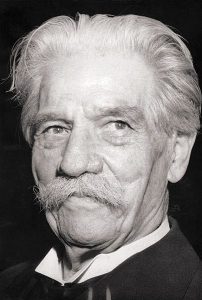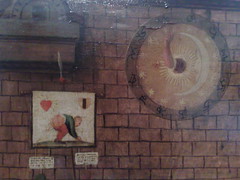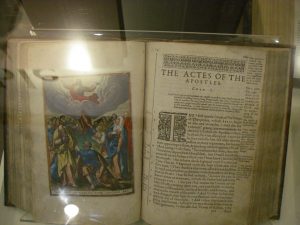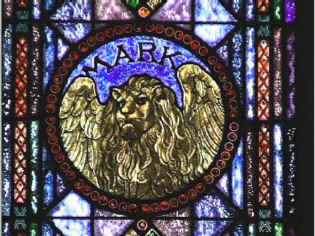James McGrath has replied to my previous post, Did Jesus exist on youtube? His reply is here: More-Myticist-Creationist Parallels: Messiahs, Wisdom and Jesus.
Avoiding and denying what I wrote
James claims that my references to the scholarship of Neusner, Green, Fitzmyer and Mack are so well known (“common knowledge”) that I was completely misguided (in fact I was reminding him of creationists) when I supposedly tried to use these quotations to discredit the argument that Jews were unlikely to invent a crucified messiah. In fact it is James who is avoiding the issue here, not me.
James has sidestepped the point I was using those “common knowledge” citations to address. I used those quotations to remind him that there is no evidence for his claim that there was some widespread common expectation of a messiah. James had said that this Jewish belief was “well documented” for the time of Jesus. It is not well-documented. He knows this, and I know he knows the “common knowledge” citations I had to pull out to address his false claim in his video.
This was the point I was addressing. And James used this particular point — that there was a widespread expectation in the time of Jesus of a Davidic messiah — as the sole support of his assertion that no Jew would invent a crucified messiah.
So when James says my citations are “beside the point” as far as his argument goes, he is ignoring what I wrote and what he argued himself in the video. I used the citations to address the very point he made to justify his assertion.
When arguing for the historical Jesus, it is quite common to see such superficial and false claims being bandied about without thought. I know very well that scholars would never use such standard of argumentation in a scholarly paper. But they seem to think any slapdash mantra will do for lay audiences — and it will certainly do for those who argue a position for which they cannot disguise their visceral contempt.
Presumably such slapdash “arguments” are meant to address the less well informed audiences, or even peers who share a similar disdain for the opposing argument. The practice suggests an impatience on the part of the historicists with the thought of bothering to prepare any serious case.
Still no evidence
I asked James for evidence of such a widespread Jewish belief in a Davidic type messiah around the time of Jesus. Here is the closest he got to that evidence in his reply:
We have evidence for such “messianic” beliefs in the Judaism of this period, and conversely, we have no evidence whatsoever from pre-Christian Judaism for the view that the restored Davidic king would die at the hands of his enemies.
The closest one can find is perhaps the reference in Daniel’s pseudo-prophecy to the anointed high priest Onias being killed (Daniel 9:26)
He simply repeats his bald claim that we have evidence for this belief in this period (of Jesus), and cites not a bit of it.
James also misrepresents, to the point of caricature, the mythicist argument. No mythicist case that I know argues that “a restored Davidic king” would die at the hands of his enemies. James avoids completely my point that the early Christians boasted a greater than the mere physical Davidic king — they boasted a messiah who had conquered the world of demonic powers and death itself.
Like a creationist, again
James then accuses me of being like a creationist because I was guilty of what I was accusing others when I said Paul claimed Jesus was a God. Firstly, James seems to be just making up accusations against me. I nowhere have said that, although James has himself repeatedly said I believe this. I do not recall ever saying this, and always thought I was careful to qualify my statements about Paul’s beliefs, by using such terminology as “son of God” or “divinity”.
It seems James is so eager to throw insulting labels at me that he resorts to accusing me of whatever he simply just assumes to know I think or claim. He did not quote me. (The discussion to which he was referring is here.)
So on this basis James accused me of being a pot calling the kettle black, and therefore I was like a “creationist”. James seems to have more skill with how he uses his words than he does with actually basing his arguments on evidence.
Still no evidence
My initial request to James for evidence was for him to support his claim that the earliest evidence we have of Christian belief was that Jesus was a man, and that the divinity side was only gradually attached later.
James’ response?
He finds fault with me for adopting “a minority view”. Well, yes, I guess I do. Presumably he would rather there be no minority views to contend with. Damn gnats.
If minorities go with the evidence that suggests earliest Christians viewed Jesus as a divine being, a divinity (see http://en.wikipedia.org/wiki/Divinity if you think that means the later Christian developed view of God, as James says I am guilty and “like a creationist” for claiming) and can find no evidence to the contrary, then so be it. If majorities represented by James are content to maintain a belief without evidence, then so be it.
But this is not quite fair. James does cite Colossians where it speaks of Jesus as one in whom the godhead “BODILY” dwells. Um, yes, ….. and so Jesus has a flesh and blood and guts human body in heaven where he now dwells with the godhead indwelling him fully? Do I have to remind James of the mainstream scholar’s book, The Resurrection Reconsidered, by Gregory Riley, that demonstrates that “body” could as easily mean a spirit as flesh?
But I know he knows that. So I have to wonder at James’ motives or whatever for even attempting to suggest that this passage is approaching the evidence I requested.
Interesting discussion on Wisdom
James raises a series of interesting questions on the place of Wisdom in Second Temple Jewish thought. I am interested because it is something I have been reading about for quite some time and look forward to discussing in a future post.
One final hit at yet another poor straw man
Finally James claims (again, — despite my pointing out to him the baselessness of his claim — but perhaps he never saw my replies on his blog) James claims once again that some mythicists “seem” to argue (thankfully he is a little more nuanced now) that X does not exist because it is described in terms of non-X. This is, of course, a caricature of a very sound argument that historicists seem incapable of dealing with, and James does play with it as a caricature.
He fails to deal with actual argument: that after we strip away all the mythological associations from other known historical figures, we see plenty of historical figure left. Take away the mythical associations (including OT descriptions) of Jesus, and we are left with the invisible man after his bandages are removed.
Insults continue to replace evidence and argument
Okay, maybe insults are all too common within the guild. But surely public intellectuals do have a responsibility to set a higher standard for their publics.
James fails to supply the evidence I asked him for in order to support two claims of his:
- that the earliest Christian belief was that Jesus was human and that divine attributes were only attributed to him later;
- and that there is evidence for a general Jewish expectation of the coming of a Davidic Messiah in the time of Jesus.
He has not provided any evidence for either claim.
He has chosen instead to compare me with a creationist.
Presumably he finds the latter course the easier option.
I thought it was creationists who were the ones prepared to shut down debate by arguing in defiance of the evidence, and at the same time misrepresenting the claims of their opponents.










